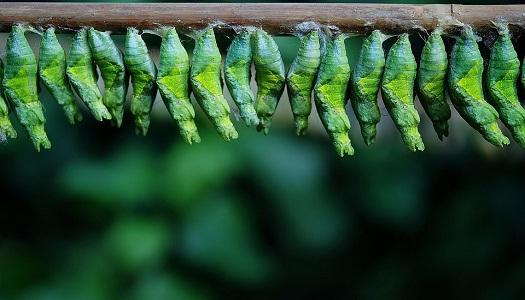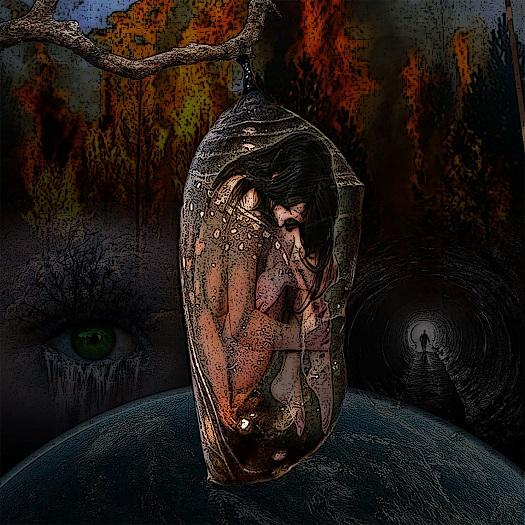A time of transformation

Do you remember how the caterpillar turns? What happens in the cocoon? I have been thinking a lot lately of the butterfly analogy because we are all now cocooning at home and as such, I was wondering what transformation is taking place, what is it we are going to turn into? Before the larvae can become butterfly (in the pupa or transition stage), it literally dissolves beyond recognition. It liquefies and nearly dies off completely until – wait for it – the imaginal cells cluster and reorganize into creative communities that catalyze the winged one into maturity. This ordeal (interestingly, that word itself is etymologically tied in with the tribulations of initiation) is temporary, but very dark and very difficult all the same. Even the butterfly herself does not even know she can fly until she splits out of the chrysalis, lets her wings dry off a little, shakes herself awake and takes flight.
Transformations are like that – unpredictable, mysterious, messy, often dangerous and sometimes deadly, and always a surprise in the end. We don’t ever know what is happening to us while we are in that alchemical process of gestating from this to that until we arrive to greet ourselves in the new form. Rebecca Solnit, one of my favourite authors, was on the same wavelength recently writing about hope in her article in The Guardian that begins with the caterpillar dissolving itself in “a sort of living soup” (2020, n.p.). Rebecca calls for us to become those imaginal cells right now on a world scale, to form inclusive communities that reorganize and reimagine our ways of being our mature adult selves for the sake of what is getting ready to be born. Quite possibly, many of us are all dreaming the same dream right now, conceiving of “the sheer inevitability of wings” (Rosen, 2009, p. 182) that will carry our best possibilities forth, our best most generous selves forward to do good for the sake of all life. (Of synchronistic note: the same day I agreed to write a blog post about the butterfly, Solnit’s article came out).
We can all take heart that the cocooning stage will not last forever, rather it is necessary right now to unravel our old identities and allow something else to emerge. And while it can seem like nothing much is happening in this stage of patiently waiting, everything is happening in the chrysalis. The word for butterfly in Greek is psykhe (or psyche) reminding us that profound changes must begin at the soul level before we can emerge one day to another level of collective identity and maturity. Inner changes come first before real change ever happens in the world, or we might say, human change for climate change. I don’t know what is coming, however I do hope that as we step forth from our (fertile) isolation chambers that we may be more calm, intelligent, kind, caring, relaxed, and somehow, lighter, if we choose to remember how this transformation story goes…

In Impossible Darkness
Do you know how
the caterpillar
turns?
Do you remember
what happens
inside a cocoon?
You liquefy.
There in the thick black
of your self-spun womb,
void as the moon before waxing,
you melt
(as Christ did
for three days
in the tomb)
conceiving
in impossible darkness
the sheer
inevitability
of wings.
(Rosen, 2009, p. 182)
Rosen, K. (2009). Saved by a poem. The transformative power of words. Carlsblad, CA: Hay House.
Solnit, R. (2020, April 7). What coronavirus can teach us about hope. The Guardian. Retrieved from:
Collage used with permission: Doug van Houten www.bodyartsoul.org